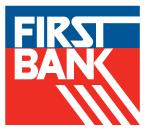In a rising cost environment, companies are seeking innovative ways to manage their insurance costs. One approach gaining traction is the establishment of a captive insurance company. Rather than relying solely on the traditional commercial insurer market, a captive is a legal entity formed to insure the risk of a parent company, a number of affiliates, or unrelated third parties. This method offers a tailored approach for organizations to gain greater control, insights into fee transparency, and the potential to reduce long-term insurance costs. To evaluate your needs, consider the following:
Understand the Different Types of Captives
- Single parent
- Cell captives
- Risk-retention group
- Group captives
Business Profile and Financial Strength
- Captives are optimized for business’ exposure to risks that are difficult or expensive to insure and require a long-term commitment to improving the company’s risk profile.
- A feasibility study will summarize recommendations and outline an implementation plan for your company.
Cost and Financial Implications
- Captives provide the potential for significant long-term cost savings by retaining underwriting profits and investment income.
- Premiums are based on the company’s actual loss experience over a ten-year period looking at the frequency of claims, not severity of claims.
- Captives can access wholesale reinsurance markets.
- Consider formation costs (application, business plan creation to identify risks to be insured, captive incorporation costs, documentation) and operational costs for ongoing administration (management fees, actuarial services, audit, legal, etc.).
Control and Risk Management
- The use of a captive stabilizes the potential for premium increases because the risk is shared between all members of the captive versus the commercial marketplace.
- Requires internal expertise or reliance on third-party captive managers.
Regulatory Compliance
- Consider where the captive is domiciled or licensed to do business; the domiciled is either onshore or offshore.
In summary, captive insurance offers a compelling blend of enhanced control, long-term cost efficiency, and strategic risk management. Businesses can tailor coverage to their unique risks while reducing reliance on commercial insurance markets. Captives not only allow companies to retain profits and investment income, but it fosters a culture of proactive risk mitigation, provides potential tax advantages, and can serve as a vehicle for wealth preservation, ultimately strengthening the business to thrive through the generations. Connect with
First Bank's Commercial Banking team today to craft a tailored approach that aligns with your risk management goals and financial objectives.


